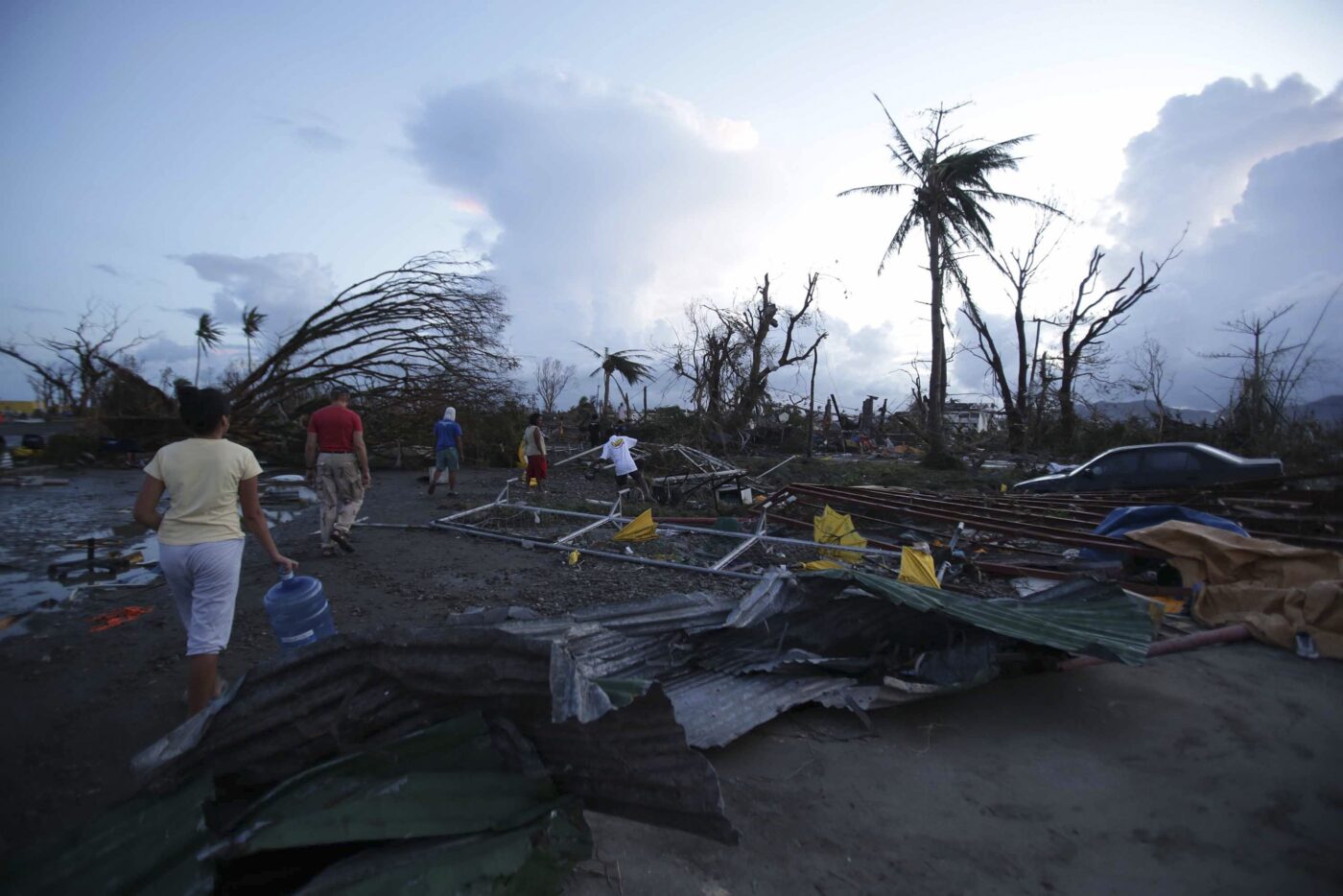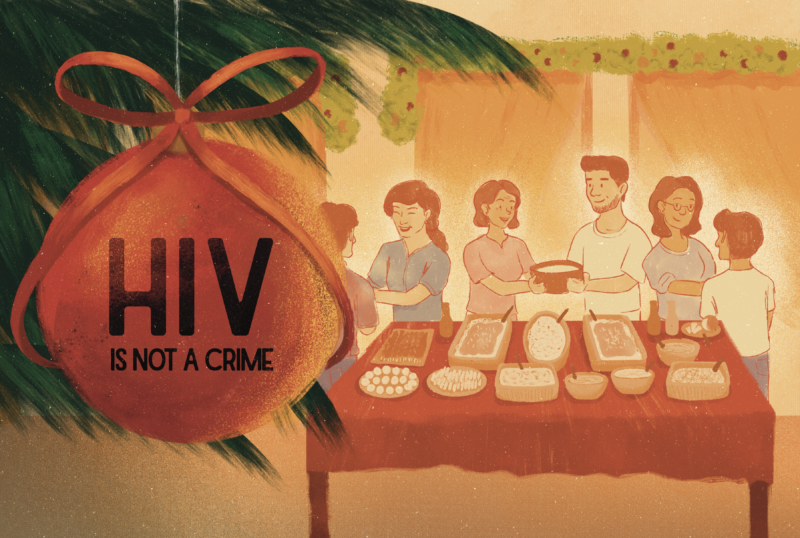VISAYAS REMAINS in ruins more than a week after Typhoon Yolanda (international name Haiyan) ripped through the Philippines on November 8, 2013.
The historic typhoon, noted by the Philippine Atmospheric, Geophysical and Astronomical Services Administration as the second-deadliest storm on record in terms of casualties, resulted in massive damages to infrastructure and agriculture and left thousands dead.
“It cannot be denied that the Philippines has faced massive destruction and loss of life… In the coming days, be assured: Help will reach you faster and faster. Remaining calm, praying, cooperating with and assisting one another are the things that will help us to rise from this calamity,” President Benigno Aquino III said in an official statement last November 11.
The public and private sectors have taken widespread initiative to facilitate in the rehabilitation process. However, with major communication lines down and roads inaccessible, relief operations have become exponentially difficult. Rebuilding the region will prove to be a slow and arduous rise back up.
Historical
The typhoon was considered the most powerful storm of the year. At the typhoon’s peak, it reached 8.1 on the Dvorak intensity scale, which measures the strength of a storm via satellite. The scale’s upper limit is 8.0.
It also hit unprecedented levels on the typhoon signal scales, at its peak causing Negros Occidental to put up storm signal number four, “a first in a very long time” according to Mayelle Nisperos, a legal management sophomore from Bacolod. She said that storms hardly reach signal numbers two or three in Bacolod.
Ysabella Lebrilla, an economics junior from Iloilo City, said the same. “The last time [a signal number four storm hit the area] was around five years ago during [Typhoon] Frank.”
Information design sophomore Paulin Almira of Cebu also noted that the monster storm was one of the strongest to hit her province. “Roofs of several houses have already come off. The rains and winds [were] stronger than they [had] ever been in Cebu,” she said.
Braving the storm
Nisperos, Lebrilla and Almira agreed that advanced warnings from the government and news agencies prepare as best as they could for the typhoon.
According to Nisperos, early and forced evacuations were done by the police in certain disaster-prone areas in Bacolod, while Lebrilla said that in Iloilo, people began stocking up on food and supplies days before the storm was expected to hit.
“[Cebu was] as prepared as it could [have been], given the amount of time they had to prepare,” Almira said. When Yolanda struck, the province was still in the process of rebuilding after last month’s disastrous 7.2 magnitude earthquake.
Arguably the city that took the hardest hit, however, is Tacloban, Leyte.
According to Nika Tansingco, a life sciences junior from Tacloban, even before the storm reached the city, she began receiving reports of trees and posts falling over and glass shattering everywhere.
“People were panicking trying to keep the doors and windows shut, they heard really loud noises from outside… and the winds were incredibly cold and strong,” she said. “To think the storm was still supposedly several kilometers away.”
“I think the government did what they could [have] given the time,” Tansingco said. “But still, no one could have foreseen exactly this much damage.”
Abigail Favis of the Ateneo Environmental Council, however, found fault with the government’s warnings. “We have so many warnings. Unfortunately, if the local community cannot relate to these warnings—how these warnings are worded, what format the warnings were in—it would be very hard for them to understand the gravity of the situation,” she said.
The aftermath
The National Disaster Risk Reduction and Management Council counts 3,982 fatalities as of press time.
Tacloban was arguably the worst hit. Department of Interior and Local Government Secretary Manuel “Mar” Roxas said in a press briefing that the scale of the damage was overwhelming, describing some places as a wasteland of mud and debris.
In an interview with ABS-CBN, Tacloban City Administrator Atty. Tecson John Lim described the grief brought about by the typhoon. “To the people watching at home… these may just seem like numbers to you. But to us, to the people of Tacloban, these were our brothers, our sisters, our mothers, fathers and friends. The city is littered with their lifeless faces. Our homes have all been washed away,” he said in a mix of English and Filipino.
Lim added that roughly 90 percent of the city had been destroyed. International news agencies have flown in to cover the aftermath, and CNN described the devastation as “off the scale and apocalyptic.”
Government efforts
On the day the storm ravaged through the Visayas, the Department of Social Welfare and Development (DSWD) began organizing relief efforts to prepae roughly 25,000 relief packs to be sent to affected areas.
Heeding the call for volunteers, the Ateneo’s Office of Social Concern and Involvement and the Sanggunian through its Disaster Response and Management Team sent an Ateneo contingent to DWSD’s National Resource Operations Center (NROC) in Pasay City the next day.
Vida Alegre, a communication sophomore who joined the contingent, said, “The first thing I saw when I entered [NROC] was a giant whiteboard with stats on [the Zamboanga crisis, the Bohol-Cebu earthquake and Haiyan]. It was pretty overwhelming… to see those three disasters put side by side. [DSWD] isn’t even finished with Zamboanga and Bohol yet, and now they have another five million [people] to take care of.”
Atenean response
Relief efforts in the Ateneo itself began on the evening of November 13, after DSWD requested that the campus serve as a satellite repacking center. Hundreds of students, teachers and staff flocked to the covered courts to help reach the quota of 80,000 family relief packs ordered by the DSWD.
According to Dr. Maria Luz Vilches, Acting Vice President of the Loyola Schools, volunteers were able to finish packing more than 82,400 relief packs by 6:00 AM on Sunday, November 17.
“This is a perfect example of how we learn things outside the classroom because you see how difficult the operations are, what it really takes for disaster, not just preparedness but also mitigation,” Favis said of the relief operations.
Sanggunian President Dan Remo added, “In the long run, all the events of the Loyola Schools will… try to empower Ateneans to go on their own without operations like this. I am confident that with what Ateneans know, what they’re doing and how they do it, they don’t need one person to tell them to take action—they’ll just do it.”
With reports from Pamela P. Baluyot, Regine D. Cabato and Jose R. Mendoza




